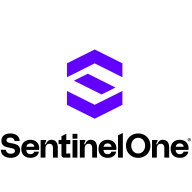

SentinelOne Singularity Complete and Malwarebytes Teams compete in the cybersecurity products category. SentinelOne seems to have the upper hand due to its robust rollback feature, comprehensive automated threat prevention, and responsive customer service.
Features: SentinelOne Singularity Complete offers advanced AI for real-time threat analysis, a highly effective rollback capability, and automated EDR. Malwarebytes Teams excels in malware detection and removal but lacks the advanced rollback and proactive threat-hunting capabilities of SentinelOne, making it better suited for straightforward protection.
Room for Improvement: SentinelOne could improve its user interface and reporting capabilities and make policy flexibility and agent updates more intuitive. Malwarebytes should reduce false positives, enhance reporting, and improve integration flexibility. Its interface and installation process need refinement to match enterprise-level expectations.
Ease of Deployment and Customer Service: Both solutions are deployable across various environments, including cloud and on-premises setups. SentinelOne offers comprehensive deployment versatility and superior technical support. Malwarebytes provides reliable support, but it may not be as extensive as SentinelOne’s.
Pricing and ROI: SentinelOne is generally more expensive but offers a higher ROI by reducing incident response times and increasing security visibility, appealing to larger organizations. Malwarebytes is budget-friendly for smaller enterprises but may not provide the same extensive ROI in handling advanced threats.
| Product | Market Share (%) |
|---|---|
| SentinelOne Singularity Complete | 4.7% |
| Malwarebytes Teams | 2.2% |
| Other | 93.1% |


| Company Size | Count |
|---|---|
| Small Business | 22 |
| Midsize Enterprise | 8 |
| Large Enterprise | 6 |
| Company Size | Count |
|---|---|
| Small Business | 82 |
| Midsize Enterprise | 45 |
| Large Enterprise | 76 |
Malwarebytes Teams provides advanced threat protection and efficient detection and removal capabilities, featuring cloud-based management and robust endpoint security. It operates on Windows and Mac, emphasizing threat interception and the cloud-management interface.
Offering comprehensive protection, Malwarebytes Teams is recognized for its customizable and user-friendly interface. The anti-exploit feature effectively intercepts threats in Office applications, while frequent updates maintain security standards. Efficient scanning, threat response, and rollback features are highly valued, as is its ability to integrate seamlessly into diverse environments. Remote accessibility and cloud management enhance its robust endpoint protection.
What are the key features of Malwarebytes Teams?Malwarebytes Teams is widely implemented in cybersecurity across industries for endpoint security. Organizations deploy it for malware detection, intrusion protection, and compliance scanning, relying on its antivirus capabilities and ransomware rollback. It serves as a secondary tool alongside primary systems to enhance security on both Windows and Mac environments, particularly valued for monitoring usage behaviors without controlling endpoints.
SentinelOne Singularity Complete provides AI-driven threat detection and response with features like ransomware protection and rollback, offering endpoint protection with minimal system impact and deep forensic analysis.
SentinelOne Singularity Complete combines machine learning and artificial intelligence to offer robust endpoint protection. It delivers real-time insights and advanced threat detection through seamless integration with third-party tools, allowing for efficient endpoint management. With an emphasis on user-friendliness, it ensures reduced false positives. Room for improvement includes better integration options, enhanced reporting, and more precise analytics to tackle false positives. Users seek improved interoperability with systems and comprehensive support for legacy systems.
What are the key features of SentinelOne Singularity Complete?Organizations from industries like finance, healthcare, and technology deploy SentinelOne Singularity Complete to safeguard endpoints such as PCs, servers, and virtual machines. Equipped with EDR, it effectively replaces traditional antivirus systems and integrates with cloud technology for real-time security insights.
We monitor all Endpoint Protection Platform (EPP) reviews to prevent fraudulent reviews and keep review quality high. We do not post reviews by company employees or direct competitors. We validate each review for authenticity via cross-reference with LinkedIn, and personal follow-up with the reviewer when necessary.